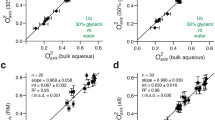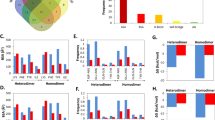Abstract
The accurate description and analysis of protein-protein interfaces remains a challenging task. Traditional definitions, based on atomic contacts or changes in solvent accessibility, tend to over- or underpredict the interface itself and cannot discriminate active from less relevant parts.We here extend a fast, parameter-free and purely geometric definition of protein interfaces and introduce the shelling order of Voronoi facets as a novel measure for an atom's depth inside the nterface. Our analysis of 54 protein-protein complexes reveals a strong correlation between Voronoi Shelling Order (VSO) and water dynamics. High Voronoi Shelling Order coincides with residues that were found shielded from bulk water fluctuations in a recent molecular dynamics study. Yet, VSO predicts such "dry" residues at dramatically reduced cost and without consideration of forcefields or dynamics. More central interface positions are often also increasingly enriched for hydrophobic residues. Yet, this hydrophobic centering is not universal and does not mirror the far stronger geometric bias of water fluxes. The seemingly complex water dynamics at protein interfaces appears thus largely controlled by geometry. Sequence analysis supports the functional relevance of both dry residues and residues with high VSO, both of which tend to be more conserved. However, upon closer inspection, the spatial distribution of conservation argues against the arbitrary dissection into core or rim and thus refines previous results. Voronoi Shelling Order reveals clear geometric patterns in protein interface composition, function and dynamics and facilitates the comparative analysis of protein-protein interactions.
Similar content being viewed by others
Article PDF
Author information
Authors and Affiliations
Corresponding author
Rights and permissions
About this article
Cite this article
Bouvier, B., Grünberg, R., Nilges, M. et al. Shelling the Voronoi interface of protein-protein complexes predicts residue activity and conservation. Nat Prec (2008). https://doi.org/10.1038/npre.2008.1522.2
Received:
Accepted:
Published:
DOI: https://doi.org/10.1038/npre.2008.1522.2



